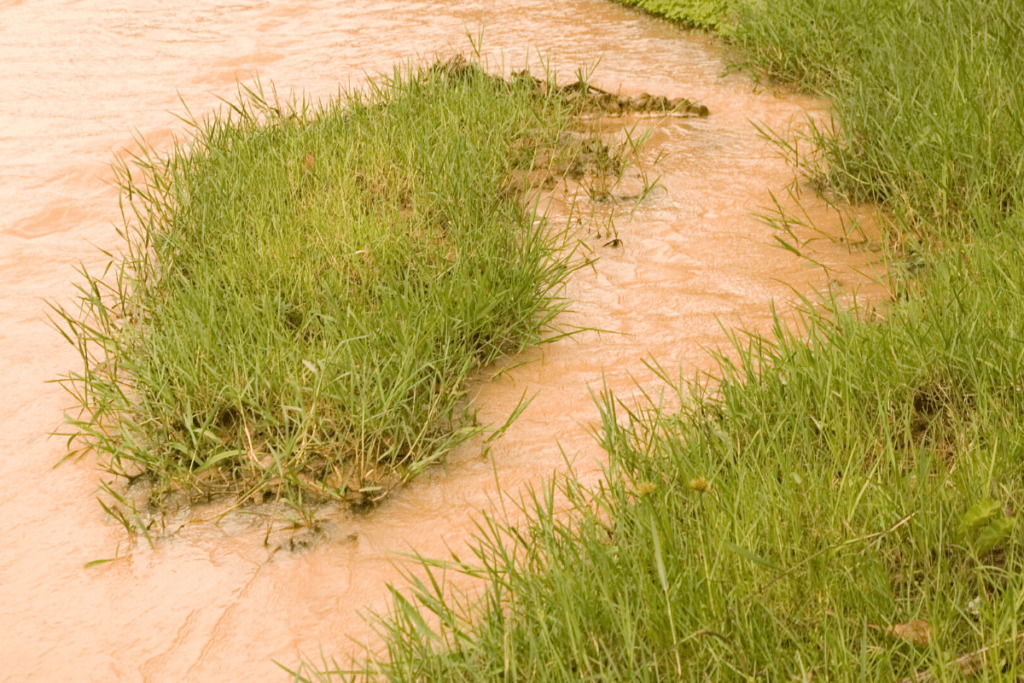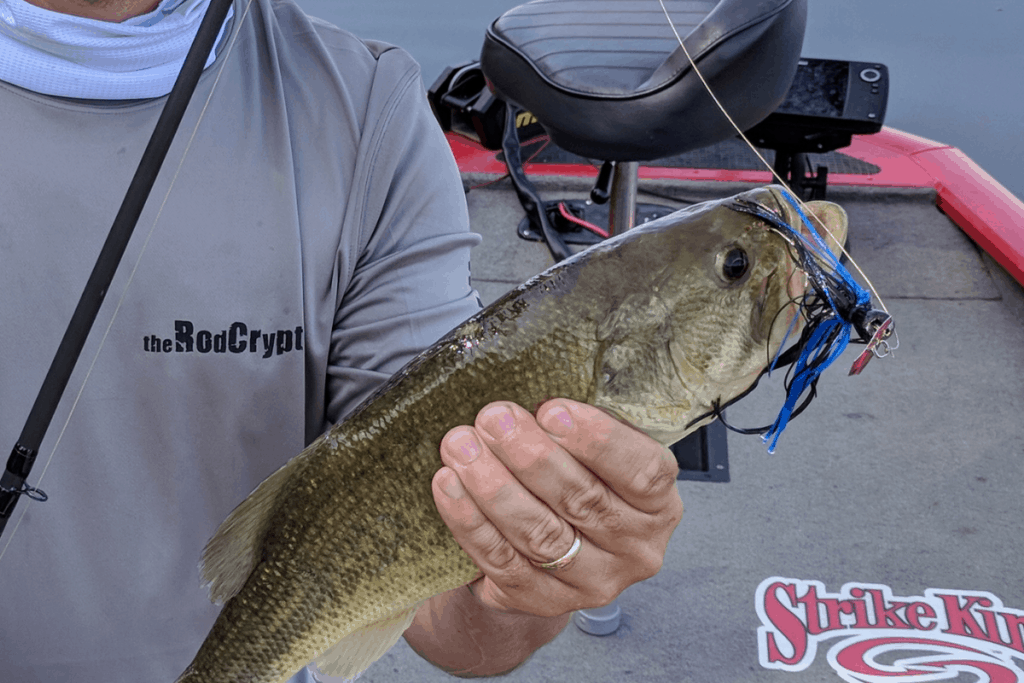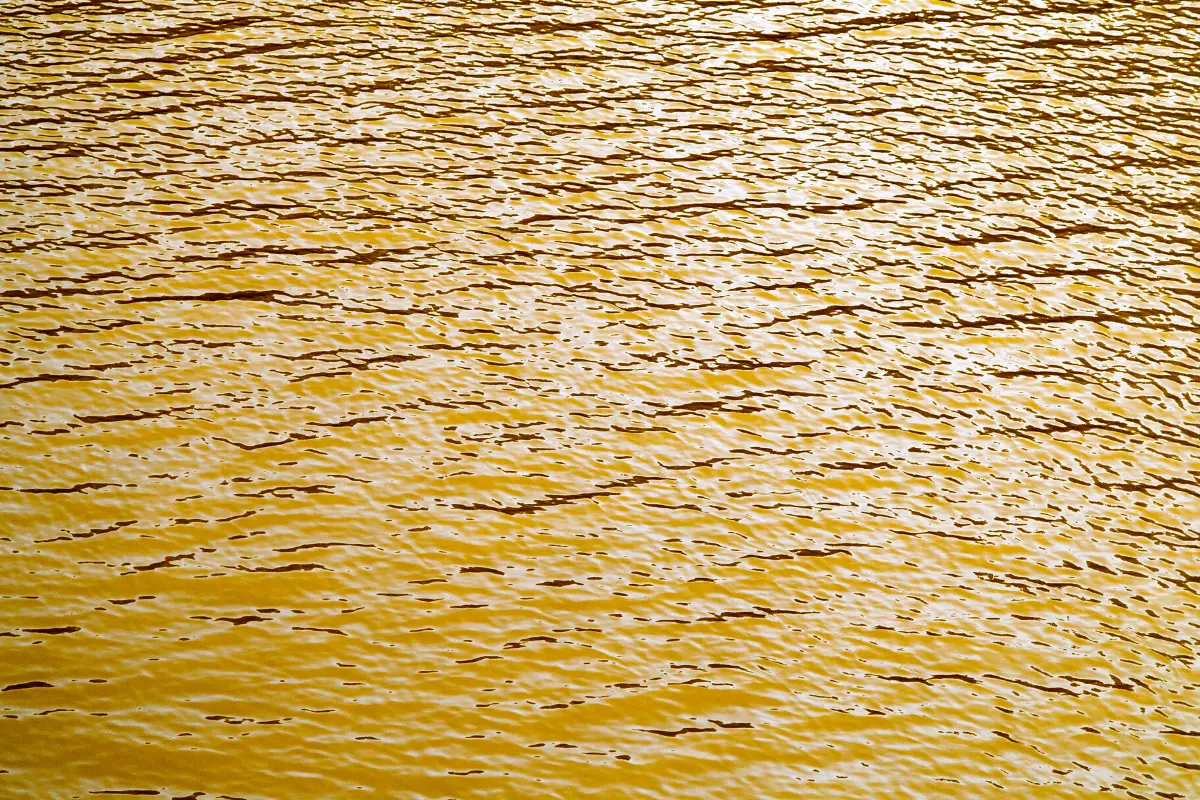There are a few situations that send bass anglers back home when they see the condition of the water. A river or lake that is cold and muddy is one of those, but if we look at the positives, you may just change your mind and look forward to fishing these conditions.
The most important thing to remember when faced with cold, muddy water, is that the bass are going to be ultra shallow. They will hunker down on cover and hold tight to it. This allows anglers to eliminate the majority of the water and focus on high percentage areas.
In this article, I am going to go over how I approach cold, muddy water in the late winter and early spring. I think you will find that not only will your confidence in these conditions grow, but you will transfer that confidence to success on the water.
Late Winter and Early Spring Bass Fishing
It happens every year. There will be a stretch of nice, unseasonably warm weather, and then a frigid rain just floods our lakes and rivers with cold, muddy water. Most bass anglers hate those conditions and stay far away from them. In fact, I was one of those. It used to make me sick just to think about it.
While it is far from my favorite way to fish, I now know that I can use these conditions to my advantage and maybe even look forward to it.
Where to Start Looking
When bass are faced with these conditions, they will do one of two things, seek out cleaner water if it is available, or they will move unusually shallow.
I have fished river systems that are the same color as chocolate milk. Within that system, I will first see if I can find an area that is protected from the mud and check it out. There is a chance you may find a pocket of protected, clean water.
If so, you can bet it will be stuffed with fish.
If you can find any clean water, don’t fear, because you still know exactly where they are going to be located.
Think Shallow, Really Shallow to Catch Bass in Muddy Water
When bass cannot escape their muddy environment, they move shallow. It is common to find them hanging in water that is less than 3 feet deep. Don’t be surprised to locate some of them with their backs almost exposed.
Not to be cliche, but that is music to a bass angler. That means beating the bank is the first order of business. I don’t know about you, but when I can pitch lure to shallow, visible cover, I get really excited.

Stay Tight to Cover
Not only will the bass be shallow, but they will stay very, very close to cover.
I have seen muddy water situations where if I pitched a jig six inches from a stump I will not get a bite, yet if I put that jig right on the wood it will get hammered. That bass did not want to move just a few inches to get the lure.
This is even more pronounced in fisheries where the water is normally clear. Those bass are used to utilizing their eyesight more than a bass that spends the majority of its time in dirty to stained water. Clearwater bass are going to so tight to that cover you need to toss lures right at it and hit it, or you may not get bit.
Use of a Consistent Type of Cover
When I have fished muddy water situations, it seems that most of the time the bass will use a single type of cover more than another.
For example, if I am fishing cold, muddy water in the early spring and I find that bass are using wood, the majority of the bass in that body of water will be on wood. If they are hanging tight to shallow vegetation, that is where most of them will be.
The same goes with rock. Yes, you can catch bass on varying types of cover in these conditions, but most of them will be using the same type.
Once I know what is the preference for that moment, I will look down the shoreline and focus on similar situations. I may even crank up the trolling motor to pass by a piece of the lake that does not the type of cover I have found them on.
Warm Rain
In previous articles and videos, I have talked about runoff coming into a river or lake. As a general rule, if the water coming in is colder than the main lake or river, stay far away from it.
If the runoff coming in is warmer than the lake or river you are fishing, then that is where you should start. During muddy conditions or clear conditions, fish will gravitate to the warmer water in the late winter or early spring.
My Favorite Muddy Water Lures
Jig
The first lure that I am going to tie on is a jig. I prefer a ¼ oz version most of the time and definitely during these types of conditions. The lighter weight allows the jig to fall at a slower rate and give the bass an opportunity to find it easier as it passes by them.
I will pair it with a bulky trailer to slow the rate of fall as well. A twin tail grub or large craw are my first choices to add to a jig in muddy and cold water.
Squarebill Crankbait
The next lure that I will throw is a squarebill crankbait. These lures are perfect for hunting up bass in a range of shallow water conditions. They will bounce over rocks, ricochet off wood and rip through grass.
I always like to say, “Anyplace you can throw a spinnerbait is a perfect place to throw a squarebill.”
Approach your shallow water squarebill fishing with that mindset and you will be putting it in the right places. Its internal rattles are also perfect for letting a bass find it via their lateral lines.

Bladed Jigs
A bladed jig, or “Chatterbait” style lure, is dynamite at searching up fish in the shallows. Its extreme vibration also excels in muddy water conditions.
I have fished bladed jigs in lakes that resemble hot cocoa. Not only did the lure come through shallow cover well, but it also caught fish. In fact, the super filthy water conditions soon didn’t bother me at all because I knew where they were and how to catch them.
Spinnerbait
The last lure on my list for cold, muddy conditions has to be a spinnerbait. This lure has been getting the job done for decades.
I would make sure to leave the willow-leaf versions sitting in the box though and grab some Colorado or Indiana blades. The extra thump is a must when the water is dirty.
The venerable bladed lure can come through most types of cover with ease and is adept at shallow water situations.
I would definitely throw it with a trailer hook though. When the water has low-visibility, the odds of a short strike go up and a trailer hook will solve that problem.
Color Selection
Choose solid colors for fishing cold, muddy water. A choice like black, black-blue, chartreuse and brown are all on the top of my list. The more subtle color variations seen in many lures are not as important as when fishing clear water.
Line Size
Dirty water allows anglers to upsize their line choice and help eliminate any chance of those fish breaking off.
I will run a slightly heavier than normal fluoro on my squarebill setup. Something in the 15lb range works nicely.
On the other lures mentioned, 50lb braid is my standard fare when the water is dark and the fish are shallow.
Final Thoughts
No doubt, fishing cold, muddy water is far from ideal. Yet, with the right mindset and knowledge, we can approach the day with the understanding the fish are going to be shallow and tight to cover.
We know where they are! That is such helpful information.
Good luck out there, be safe and make sure to encourage someone today. You never know how you might change their life forever.

